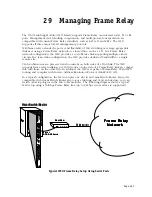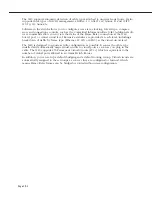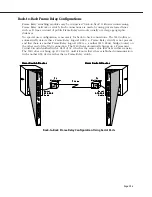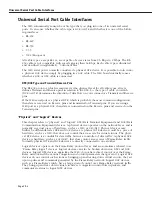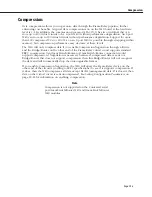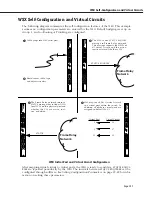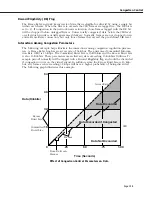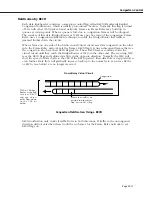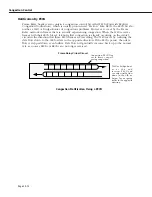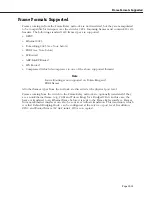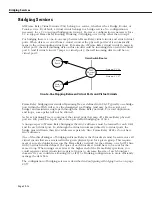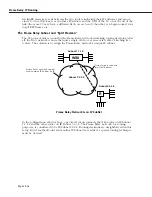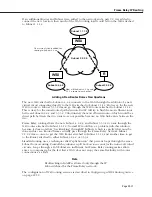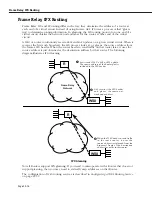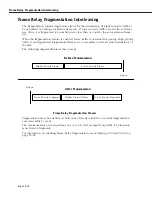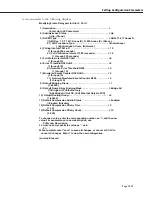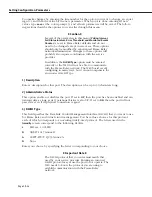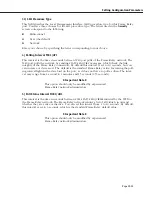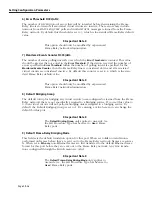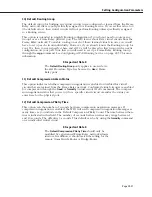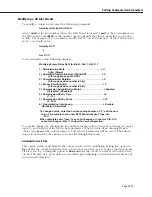
Bridging Services
Page 29-14
Bridging Services
All Frame Relay Virtual Circuits (VCs) belong to a service, whether it be a Bridge, Router, or
Trunk service. By default, a virtual circuit belongs to a bridge service. No configuration is
necessary for a VC to support bridging on Group 1. However, configuration is necessary for a
VC to support Frame Relay Routing, Trunking, or Bridging on a Group other than Group 1.
For bridging there is a one-to-one map between Frame Relay virtual circuits and switch virtual
ports. When data is received from a virtual circuit at the physical port level it automatically
maps to the corresponding virtual port. For example, if Frame Relay virtual circuit 16 maps to
virtual port 8, then all incoming data on this circuit would be incoming data on switch virtual
port 8. And if virtual circuit 17 maps to virtual port 9, then all incoming data would be on
virtual port 9.
One-to-One Mapping Between Virtual Ports and Virtual Circuits
Frame Relay bridging uses standard Spanning Tree as defined in 802.1d. Typically, one bridge
port within the WAN will act as the designated root bridge (and may be the actual root
bridge) and maintain a single path through the Frame Relay network. To avoid duplication
and loops, some paths will not be allowed.
As far as Spanning Tree is concerned, the virtual ports that map off a Frame Relay physical
port are
LAN
ports. Each port will come up as default bridging on
VLAN 1
.
A unique aspect of Frame Relay bridging is that
MAC
addresses must be learned for each
DLCI
and for each virtual port. So, although the virtual circuits map directly to virtual ports, the
bridge must still learn their
MAC
addresses separately. Also, Frame Relay
BPDUs
do not have
MAC
addresses.
One of the disadvantages of bridging in Frame Relay is that broadcasts must be sent across all
virtual circuits that are associated with a given physical port for a given group. This require-
ment can create duplication across the Frame Relay network. At the extreme, on a full T1 line
with 96 virtual circuits defined, 96 copies of each broadcast would have to be sent for the
same Group. When using access rates at the higher end of the Frame Relay spectrum, you
could separate virtual circuits into separate Groups to decrease the size of each broadcast
domain. Or, you could use a Routing (
IP
or
IPX
) or Trunking configuration to more efficiently
manage the data flow.
The configuration of bridging services is described in
Configuring a Bridging Service
on page
29-57.
Data on VC 16
WSX
Physical
Port
Virtual
Port 8
Virtual
Port 9
Data on VC 17
Omni Switch/Router
Summary of Contents for Omni Switch/Router
Page 1: ...Part No 060166 10 Rev C March 2005 Omni Switch Router User Manual Release 4 5 www alcatel com ...
Page 4: ...page iv ...
Page 110: ...WAN Modules Page 3 40 ...
Page 156: ...UI Table Filtering Using Search and Filter Commands Page 4 46 ...
Page 164: ...Using ZMODEM Page 5 8 ...
Page 186: ...Displaying and Setting the Swap State Page 6 22 ...
Page 202: ...Creating a New File System Page 7 16 ...
Page 270: ...Displaying Secure Access Entries in the MPM Log Page 10 14 ...
Page 430: ...OmniChannel Page 15 16 ...
Page 496: ...Configuring Source Route to Transparent Bridging Page 17 48 ...
Page 542: ...Dissimilar LAN Switching Capabilities Page 18 46 ...
Page 646: ...Application Example DHCP Policies Page 20 30 ...
Page 660: ...GMAP Page 21 14 ...
Page 710: ...Viewing the Virtual Interface of Multicast VLANs Page 23 16 ...
Page 722: ...Application Example 5 Page 24 12 ...
Page 788: ...Viewing UDP Relay Statistics Page 26 24 ...
Page 872: ...The WAN Port Software Menu Page 28 46 ...
Page 960: ...Deleting a PPP Entity Page 30 22 ...
Page 978: ...Displaying Link Status Page 31 18 ...
Page 988: ...Displaying ISDN Configuration Entry Status Page 32 10 ...
Page 1024: ...Backup Services Commands Page 34 14 ...
Page 1062: ...Diagnostic Test Cable Schematics Page 36 24 ...
Page 1072: ...Configuring a Switch with an MPX Page A 10 ...
Page 1086: ...Page B 14 ...
Page 1100: ...Page I 14 Index ...


